Text
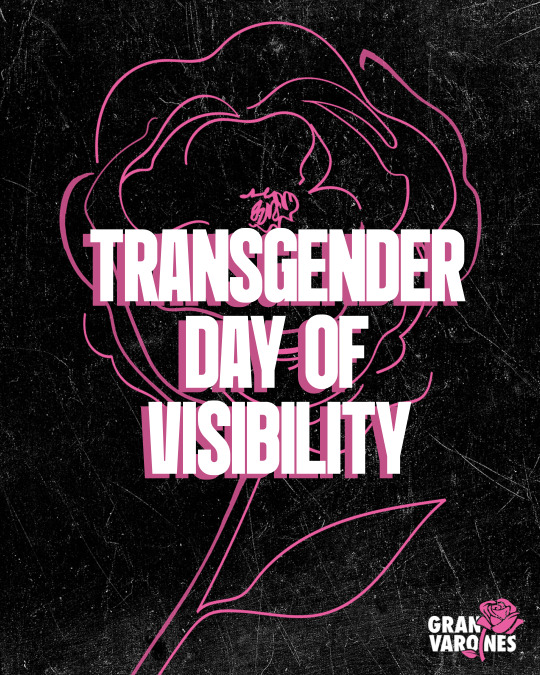
Today we celebrate Trans Day of Visibility, a day to honor and uplift the resilience, strength, and achievements of transgender and gender nonconforming people around the globe. It’s a reminder to stand in solidarity and recognize the vibrant and incredible contributions of the trans community to our universe. As we reflect on the journey towards equity and freedom, let’s also acknowledge the challenges that remain. Today is about visibility, not just in the sense of being seen, but complete freedom, equity and valued for the fullness of who we are.
6 notes
·
View notes
Text
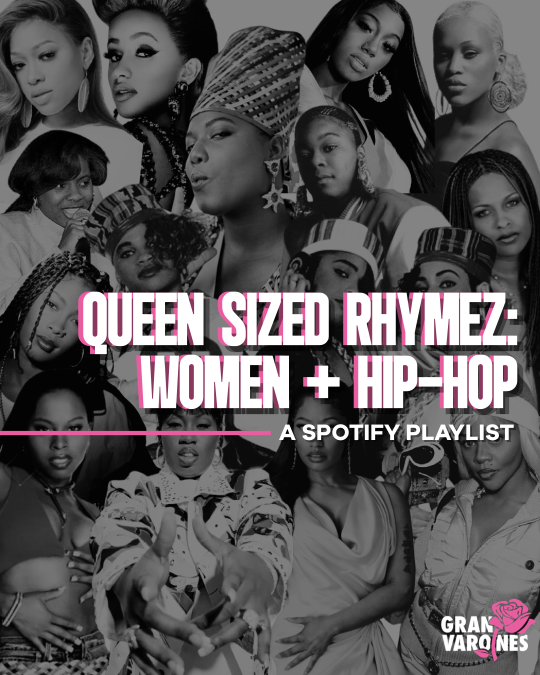
From its nascent days in the late 1970s and early 1980s, women MCs like The Sequence, MC Sha-Rock of Funky 4+1, and Roxanne Shante didn’t just step into the scene; they carved out a space for themselves with courageous and defiant voices in a predominantly male arena. As Hip-Hop evolved, women in Hip-Hop challenged gender norms and social assumptions. They pushed the boundaries of what it meant to be a woman, a Black woman artist in an anti-Black musical landscape.
Icons such as Queen Latifah and MC Lyte emerged in the late 80s and early 90s, not only for their lyrical agility but also for addressing issues like gender equality and self-respect, laying the groundwork for a legacy of empowerment and resistance.
The 1990s and 2000s saw an explosion of diversity in the representation of women in Hip-Hop, with artists like Missy Elliott, Lil Kim, and Lauryn Hill. These artists expanded the genre’s boundaries, proving that women could own and redefine Hip-Hop’s essence.
Today, the influence of women in Hip-Hop is more visible than ever, with artists like Nicki Minaj, Cardi B, and Megan Thee Stallion dominating the charts and social media, blending rap prowess with entrepreneurial savvy. They continue to break records and challenge stereotypes, ensuring that the women’s perspective is commanding, clear, and impossible to ignore.
This Spotify playlist, “Women + Hip-Hop: Queen-Sized Rhymes,” celebrates the journey and achievements of women in Hip-Hop. From the pioneers to the new queens, it’s an homage to the resilience, creativity, and sheer talent of Black women who have transformed the Hip-Hop genre. Their stories and songs are not just a part of Hip-Hop history; they are essential chapters in the narrative of music and cultural innovation and queer history.
#granvarones#gay#queer#latinx#storytelling#afrolatinx#lgbtqia#hip hop#music history#womens history month#Spotify
2 notes
·
View notes
Text

Did you know that over 30 states in the US have laws that disproportionately penalize individuals based on their HIV positive status, often regardless of actual transmission risk. This stigma not only undermines science and public health efforts, it perpetuates violence against people living with HIV.
Today, we stand together to challenge the stigma, discrimination, and injustices faced by people living with HIV.
Modern medicine has transformed HIV into a manageable condition. Yet, stigma and outdated laws lag behind. It’s time to listen to science!
1. Join the SERO Project and others organizing around HIV decriminalization
2. Learn more about HIV stigma and serophobia, which engenders fear and inaction when people living HIV are harmed by criminal and medical surveillance.
3. Read poz writers who have been discussing the harm of criminalizing HIV positive people

#granvarones#gay#queer#latinx#storytelling#hiv is not a crime#afrolatinx#aids#lgbtqia#stophivtogether
2 notes
·
View notes
Text

Today, we honor and celebrate the life and legacy of Hydeia Broadbent, a beacon of hope, courage, and relentless advocacy in the fight against HIV/AIDS. Hydeia was a warrior whose spirit and determination transformed the landscape of awareness and compassion for those of us living with HIV/AIDS.
From a very young age, Hydeia stood in the glaring spotlight of public attention, not for fame or recognition, but to challenge the stigma and misconceptions surrounding HIV/AIDS. Diagnosed with HIV at three years old, Hydeia was not expected to survive past age five. In 1987, almost a decade before the introduction of effective HIV treatment, this prognosis was pretty accurate for children battling opportunistic infections brought on by HIV.
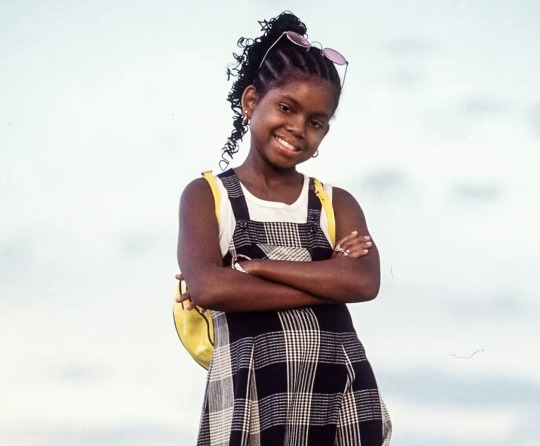
Hydeia’s mother immediately became a fierce advocate and enrolled Hydeia in clinical trials to prolong her life. It was an extraordinary win during a time when HIV clinical trials did not include women, young people, and people of color.
A chance meeting with the late HIV advocate Elizabeth Glaser in 1988 at the National Institute of Health, where they were both receiving treatment, led to Hydeia becoming a public speaker. After telling her story worldwide, including on a TV special for Nickelodeon with Magic Johnson, 20/20, Good Morning America, and becoming one of the most memorable guests of the Oprah Winfrey Show, Hydeia had become the face of not just pediatric aids but the first generation of children born with HIV.

Hydeia’s powerful and unwavering voice broke through barriers of fear and ignorance. She spoke at schools, appeared on national television, and collaborated with organizations worldwide, sharing her story to educate others about the reality of living with HIV/AIDS. Her message was clear: HIV/AIDS does not define a person, and everyone deserves love, respect, and compassion.
Hydeia changed this world! She helped shape how we advocate for young people and Black women living with HIV. She changed hearts and minds, pushing society towards greater acceptance and understanding. She inspired countless individuals to get tested, to speak openly about their status, and to fight against the stigma that continues to surround HIV/AIDS.
As we remember Hydeia Broadbent today, let us honor her memory by continuing her work. Let us be advocates for change and champions for accessible treatment for all people living with HIV, especially young Black women. Hydeia’s fight is our fight, and in her memory, we pledge to keep the flame of her legacy burning bright.
Hydeia, rest in peace. Your legacy, a tapestry woven with threads of hope, love, resilience, and unyielding commitment to all people living with HIV, will continue to guide us until there is a cure.

Hydeia Broadbent
June 14, 1984 – February 20, 2024
#hydeia broadbent#granvarones#gay#queer#latinx#storytelling#trans#afrolatinx#aids#lgbtqia#black history month
23 notes
·
View notes
Text

“here is a message to the super hoes”
whew, name a more iconic and sex-positive opening line of a hip-hop song released in 1998 - during the genre’s golden era? well, maybe i am being hyperbolic, but almost every lyric in “jimmy” by the pioneering new york hip-hop group boogie down productions is a foundational text.
music enthusiasts, critics, and historians all agree that the late 1980s was a golden era for hip-hop. artists like public enemy, NWA, eric b. & rakim, and boogie down productions (BDP) were all reshaping the genre’s landscape by utilizing powerful storytelling for social commentary and activism.
composed initially of KRS-one, d nice, and scott la rock, BDP emerged in 1987 with their explosive and critically acclaimed debut album “criminal minded.” the impact of BDP’s hard-hitting style of rap narrated the realities of life in the bronx during the ronald reagan era was immediate. sadly, BDP was dealt a devastating blow in august 1987 when member scott la rock was murdered, just months after the release of the album. he was 25 years old.

by the release of BDP’s sophomore album “by all means necessary” in april 1988, the group’s music had transitioned towards a more socially conscious and political commentary. inspired by Black revolutionary malcolm x’s philosophy of self-determination and empowerment, the album tackled topics ranging from racism, poverty, education, health, and the AIDS crisis.
“cuz now in winter aids attacks
so run out and get your jimmy hats”
written, produced, and performed by KRS-one, “jimmy,” short for “jimmy hat,” was a metaphor for condoms and was revolutionary for its time. amidst the track’s frenetic beats and melodic rhymes, the song delivers a crucial public health message about safer sex, prevention, and the responsibility we all have to protect our health and the health of our communities.
youtube
before the 1980s and the emergence of AIDS, condoms were primarily viewed and recommended as a means of preventing pregnancy, with their role in preventing sexually transmitted infections (s) receiving less emphasis. but by the mid-1980s, there was a collective effort by health organizations, activists, media and popular culture to normalize condoms and conversations about safer sex as a form of STI and HIV prevention.
“do me a favor, wear your hat”
while not officially released as a commercial single, "jimmy" was a standout track from the "by all means necessary" album and garnered radio play in the summer of 1988. just a few months after US surgeon general c. everett coop sent 107 million copies of a pamphlet titled understanding AIDS, to every household in the US. this effort remains the most extensive public mailing in history.
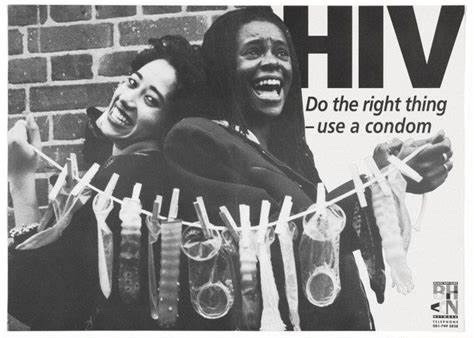
boogie down productions’ “jimmy” is a pivotal moment in hip-hop history, demonstrating the genre’s capacity to engage with pressing societal issues. through their innovative approach to music and social commentary, BDP set the tone for artists like bell biv devoe, ice cube, salt n pepa, and TLC to use their platform for advocacy and/or safer sex education.
“jimmy,” with its candid message about safer sex and HIV prevention, served as an essential intervention in 1988, utilizing hip-hop to reach young people. the song remains a powerful reminder of hip-hop’s role in public health awareness and the genre’s enduring impact on pop culture.
#granvarones#gay#queer#latinx#afrolatinx#storytelling#trans#aids#lgbtqia#songs that soundtracked the aids epidemic#hip hop#Youtube
4 notes
·
View notes
Text

i have always believed in pop music.
i have always believed in the beat.
pop music, in its infinite power, was my only religion.
and it was the patron saint pop divas like saint janet
that i pray for sanctuary, for deliverance.
as a young queer person in the late 1980s, the adults in my life were sick with homophobia. aunts, uncles, neighbors, and teachers were all transformed into monsters to me, to themselves, because of the sickness of homophobia. I heard their wishes for me to talk differently, walk differently, and stop dancing to "girl" music.

as a child, my need for the approval of these adults could have devoured me had it not been for pop music and Janet Jackson, a patron saint of pop music.
In 1989, my world was riddled with poverty, AIDS, addiction, and abuse, but people would still tease me for being me. but Janet, her music, performances, and existence, offered a vision of the world not as it was but as it could be—a world where adults were not the monsters beneath my bed but were like Janet, a source of power, a reflection of love and not shame.
on this #janetjacksonappreciationday, as i continue to navigate the complexities of my healing and acceptance in my ever-evolving world, the legacy of pop music and its divas like janet jackson endure. they are my constant reminder of the transformative power of art, the importance of visibility, and the enduring need for connection and understanding. pop music, in its glorious, unabashed celebration of everything in all its forms, continues to be a sanctuary for me and the child in me whom the pop divas saved every day.

this is my testimony.
this is why i have always believed in the religion of pop
music and the patron saint janet jackson.
7 notes
·
View notes
Text
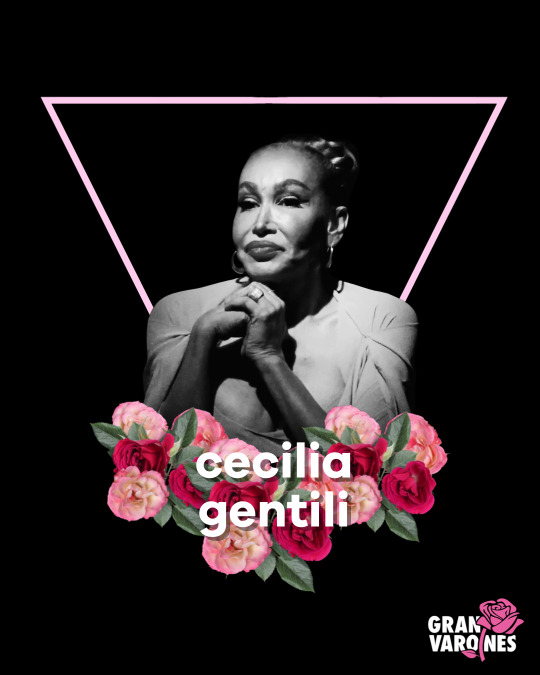
Cecilia Gentili was a trans activist.
Cecilia Gentili was a mother.
Cecilia Gentili was a friend.
Celicia Gentili was an icon.
Celicia Gentili was here.
Cecilia navigated an often unkind world with a disarming and empowering grace. Her journey from Argentina to the heart of New York City was not merely a search for sanctuary but a quest to make the invisible seen, the silenced heard, and the marginalized celebrated. Her activism was her art, and her art was a form of activism. Cecilia painted vivid pictures of resilience, struggle, and triumph through her storytelling. She brought to life the experiences of the trans community, advocated the decriminalization of sex work, and supporting those living with HIV/AIDS. Cecilia's voice was a clarion call for justice, echoing in the corridors of power and the streets, demanding change, equity, and love.
Cecilia was a force.
Cecilia's legacy is not only in the many movements she helped shape or the policies she influenced, but also in the lives she touched. She mentored many, sharing her wisdom, warmth, and wicked sense of humor, oh so generously. To be loved by Cecilia was to be seen in your entirety, embraced for who you were, and inspired to become who you might be. I know this from personal experience. Her capacity for love was boundless, and she gave it freely, fiercely, and without reservation.

Cecilia was a healer.
Like her activism, her art reflected her soul—bold, beautiful, and transcendent. Cecilia used her creativity as a tool for advocacy; her performances and storytelling were not just entertainment but powerful statements on identity, society, and the human condition. Through her art, she challenged systems, questioned injustices, and oriented communities in the discipline of hope.
Cecilia was a teacher.
Cecilia Gentili leaves behind a world forever changed by her presence. She showed us that change is possible, that love is powerful, and that living one's truth is the ultimate form of resistance. Let us honor her memory by supporting one another with compassion, living our truths, and building the world she knew we all deserved.
Cecilia is now an ancestor.
Rest in power, Cecilia. Your journey here has ended, but the love you left us is everlasting. We love you, miss you, and will never forget you.
37 notes
·
View notes
Text
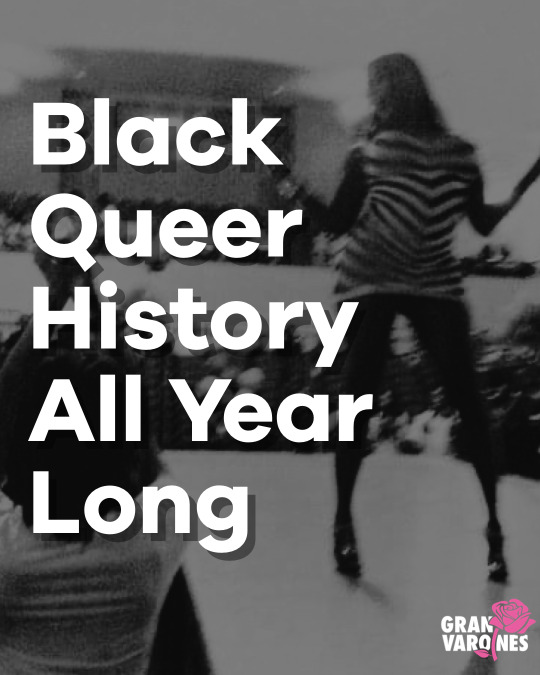
Blackness and our histories can’t be placed neatly into the confines of time. We envelope the universe, because our magic is expansive.
3 notes
·
View notes
Text
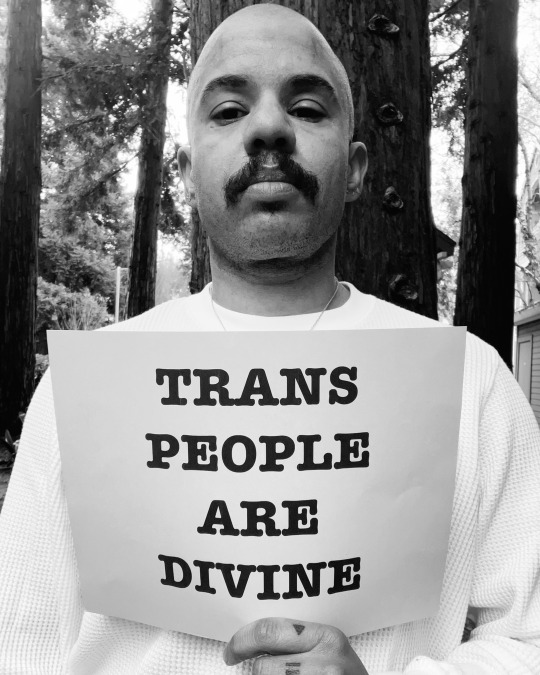
Today is the 6th annual #TransphobiaIsASincampaign. As we witness the continued attack on trans people, Join @theblacktransprayerbook in reminding the world of trans people’s right to thrive.
Who:
The Co-Editors of @TheBlackTransPrayerBook (@jmaseiii & @ladydanefe) are hosting the 6th annual #TransphobiaIsASin campaign
Why:
to call attention to, and disrupt the religious violence Trans people experience every day, (especially those of us who are Black/Brown/Indigenous.)
When:
Today, January 15th and we want your support!
1. Take a photo of yourself with a sign saying one of the following lines: “Transphobia is a Sin”, “Transphobia is Haram”, “Trans People are Divine”, or “Trans People Exist Because Our Ancestors Existed”
2. Use the hashtag #TransphobiaIsASin
3. Post on social media today, January 15th
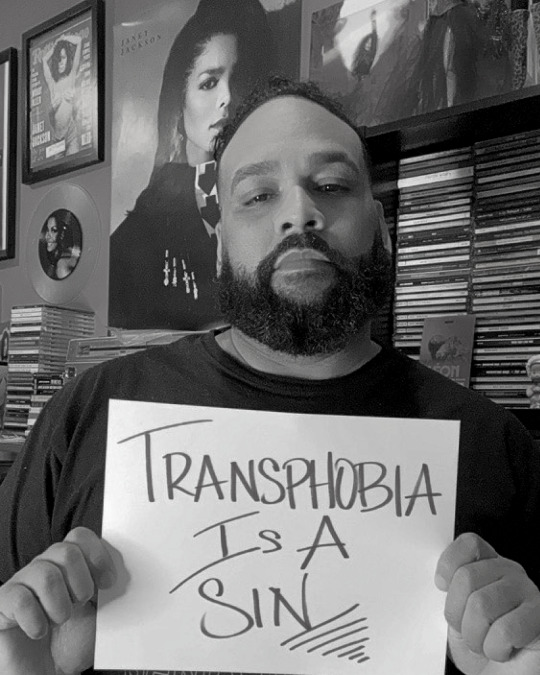
pic one: black & white photo of jaymie (he/him) holding a sign that reads “trans people are divine.”
pic two: louie (he/they) holding a sign that reads “transphobia is a sin”
8 notes
·
View notes
Text

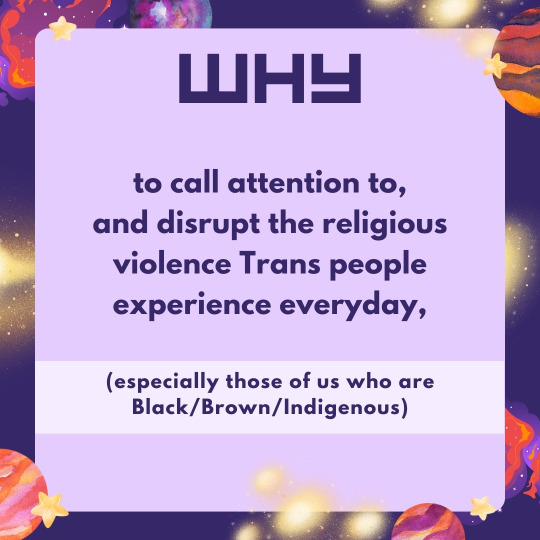


TRANSPHOBIA IS A SIN | JANUARY 15TH
Who:
The Co-Editors of @TheBlackTransPrayerBook (@jmaseiii & @ladydanefe) are hosting the 5th annual #TransphobiaIsASin campaign
Why:
to call attention to, and disrupt the religious violence Trans people experience every day, (especially those of us who are Black/Brown/Indigenous.)
When:
Jan 15th and want your help!
1. Take a photo of yourself with a sign saying one of the following lines: “Transphobia is a Sin”, “Transphobia is Haram”, “Trans People are Divine”, or “Trans People Exist Because Our Ancestors Existed”
2. Use the hashtag #TransphobiaIsASin
3. Post on social media Jan 15th
Here is a sample photo from last year:
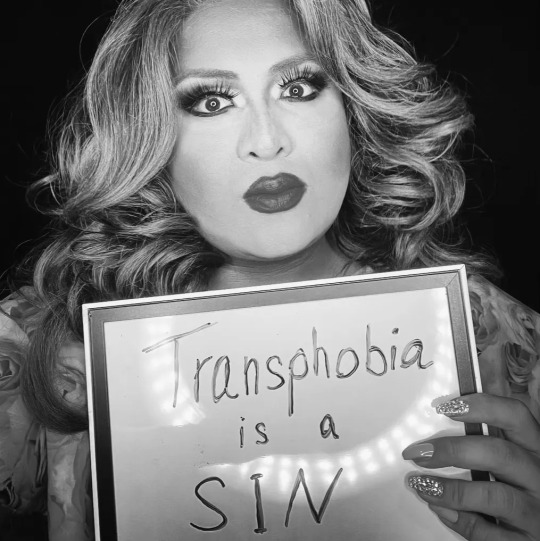
1 note
·
View note
Text

When "Martin," starring Martin Lawrence, debuted over three decades ago on Fox, the groundbreaking sitcom became a cultural moment. Capturing the cultural zeitgeist in 1992 amidst a burgeoning era of Black sitcoms, "Martin" offered a portrayal that was unapologetically Black, and for a generation, it was must-see TV.
Set in Detroit, "Martin" centered around Martin Payne, a loud, lovable, and occasionally brash radio talk show host, and his relationships with his girlfriend Gina and their close circle of friends. The show was notable for tackling issues such as race, relationships, class, and HIV/AIDS. These themes were handled with humor and sincerity, making them accessible and impactful. And the season one episode, "Variety Show," is a prime example.
Premiering on April 29, 1993, "Variety Show" follows Martin, a radio DJ at WZUP, who volunteers to produce a fundraiser for AIDS research. As Martin hosts auditions for potential performers, his ego gets overblown and alienates his support system. Even the love of his life, Gina, portrayed by Tisha Campbell, is not spared tyrannical antics. Fun fact: Gina's audition song "Push," was the lead single from Tisha Campbell's self-titled 1993 debut album.
youtube
“Push” was released in late 1992 just as “Martin” had become one of TV’s top rated shows. The song includes the lyric “If we’re gonna make that connection, golden rule is give me protection.” A subtle nod to safer sex.
When the start of the show proves to be disastrous, Martin realizes that he alone cannot pull off a successful show. He needs the very friends he alienated. His prayers are answered when Gina and their close circle of friends show up to ensure that the variety show is a success.
The episode concludes with Martin on stage, accompanied by Gina, Pam, Cole and Tommy, delivering a powerful message that the event holds a greater significance than his ego and pride.
"Tonight isn't about me. It's about something much bigger. The Money we raised tonight is going towards AIDS. You see, there are a lot of people out there struggling with this disease and we want to let them know that we care. I mean, If it affects one person, it affects us all. And we ain't even tryna stop fighting until this battle is over."
During the onset of the epidemic in the 1980s, the mention of HIV/AIDS in sitcoms was rare and often approached with a sense of trepidation. As the 1990s progressed, more sitcoms began to incorporate HIV/AIDS storylines, reflecting a growing societal awareness. "Martin" is among the popular sitcoms that addressed AIDS without losing the show's essence.
WATCH “VARIETY SHOW” FOR FREE
"Martin" aired for five seasons from 1992 to 1997. The sitcom captured the essence of the '90s Hip-Hop culture. It included an element of coolness that was unmatched by other shows. "Martin" introduced catchphrases, like "You go, girl!" and "Damn, Gina!" that remains part of our cultural lexicon. The show's impact extends beyond its five-season run and is widely considered one of the most influential shows in television history.
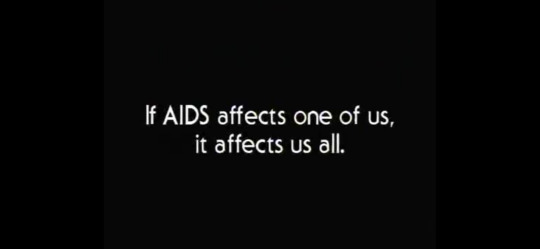
Image shown at the conclusion of the episode.
1 note
·
View note
Text

my brother nicholas was born on christmas day in 1979. this is why our mother chose the name nicholas - in honor of saint nicholas who is believed to be the inspiration for santa claus aka “saint nick.” this is probably the only time my mother acknowledged saints that were not divas like diana ross, princess diana and tina turner.
nicholas was three years younger than me and a lot of what i witnessed, experienced, and survived as a child, was done with him by my side. he was my first audience. he’d watch me lip sync and dance to songs by the mary jane girls, janet jackson, en vogue, the good girls and paula abdul well into our teen years.
nicholas loved hip-hop. when he was just 10 years old in 1991, he purchased vanilla ice’s debut album. something i am sure he’d deny. but ya know, i recently heard “ice ice baby” and no shade, vanilla kinda snapped with that flow. but i digress.

nicholas’ favorite rapper was kool g rap. he loved driving. he loved having a car. he was driving at age 12. he was funny as hell. he’d punch anyone who dared call me a “faggot” in the face. and he loved being a father.
my brother nicholas was murdered on may 9, 2001. he was 22 years old.
we didn’t grow up celebrating birthdays, but those were spent together. there were no birthday cakes, but we did have tasty cakes. we had each other even when we didn’t think that was something worth having.
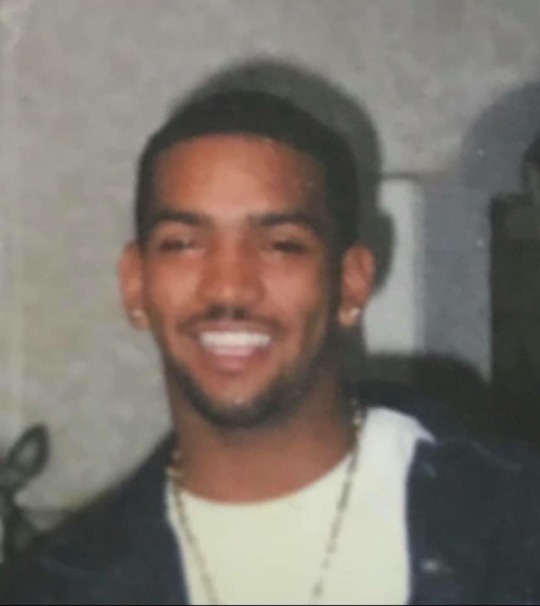
i remember almost everything. i refuse to forget. sometimes i feel i have a lack of evidence of our lives together because we don’t pictures together during our teen years. but i refuse to forget. it is the sharing of our stories that i document his existence.
today, i am wishing the biggest and happiest heavenly birthday to brother nicholas. i will speak your name over and over and over. i love you.
10 notes
·
View notes
Text

On December 10, 1989, a significant event in New York City would set the stage for Ray's remarkable journey. Thousands of activists, many living with AIDS themselves, gathered for the "Stop The Church" demonstration outside St. Patrick's Cathedral. Their target: Cardinal John O'Connor, an influential Catholic authority whose statements on homosexuality, abortion, and AIDS had sparked outrage. O'Connor, despite being appointed to Ronald Reagan's AIDS commission in 1987, controversially claimed that condoms were only 50% effective at preventing HIV transmission.
Led by AIDS Coalition to Unleash Power (ACT-UP) New York, the "Stop the Church" direct action made international headlines and introduced the activist group to mainstream consciousness. Amidst this historic event, a queer, HIV-positive visionary named Ray Navarro boldly declared, "Make sure the second coming is safe - use condoms!"
youtube
Ray Navarro's became a member of ACT UP New York in 1988. Known for their bold, innovative, and powerful organizing in demanding greater attention, research, and resources for people living with AIDS, ACT UP marked the beginning of Ray’s tireless advocacy for those affected by HIV/AIDS.
For the 1989 "Stop the Church" protest, Ray masterfully incorporated performance art by dressing as Jesus Christ. He reclaimed this religious figure, which had been weaponized against queer and HIV-positive people by Cardinal O'Connor, as a radical savior who believed in safer sex and HIV prevention.
Ray was also a founding member of DIVA TV (Damned Interfering Video Activists), a collective of artists who used multimedia to document the work and history of ACT UP. They ensured that police violence during protests, often ignored by mainstream media, was captured and preserved.
Ray's dedication extended to the Latinx LGBTQ+ community, where he recognized the unique challenges faced by individuals affected by AIDS. His bilingual activism bridged gaps and ensured that vital information and support reached this community.
Ray's performance art, challenged stereotypes and misconceptions surrounding AIDS and LGBTQ+ identity. In 1990, after losing his vision to AIDS-related illness, Ray collaborated with artist Zoe Leonard to create the photographic series "Equipped." This project centered on disabled people, shedding light on the complexities of disease, race, class, and sexuality.
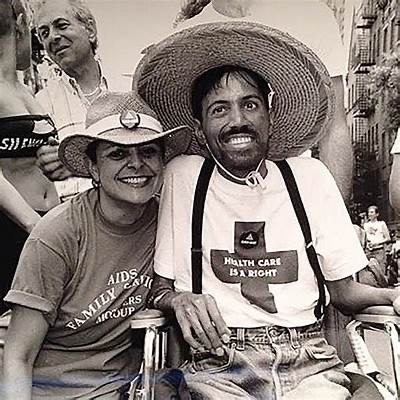
Ray Navarro died from complications due to AIDS in November 1990 when he was just 26 years old. His passing was a devastating loss to the LGBTQ+ community and the broader AIDS activist movement. However, his legacy endures through his art, performances, and activism, inspiring subsequent generations of activists and artists.
Ray Navarro's life, art, and activism challenged stigma, demanded justice, and helped change the trajectory of the AIDS crisis. Today, we remember him not only as an AIDS activist but also as a pioneering artist and a fearless advocate for LGBTQ+ rights and visibility so that someone like myself could exist, breathe and thrive. His legacy testifies to the resilience and strength of all people living with HIV and AIDS.
8 notes
·
View notes
Text
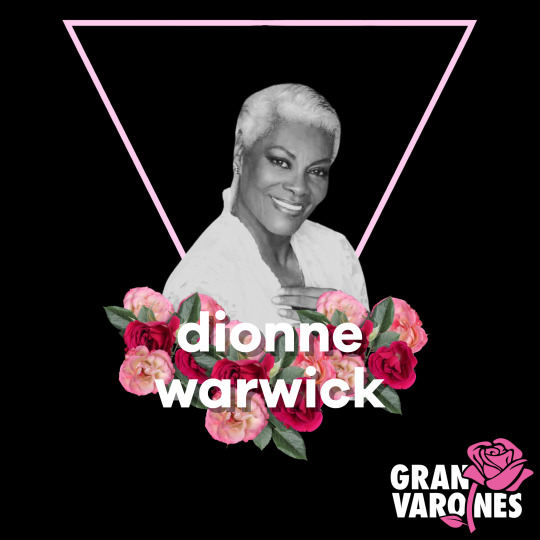
2025 will mark the 40th anniversary of Dionne Warwick’s cultural milestone single, “That’s What Friends Are For.” The one-off single, featuring the equally iconic Gladys Knight, Elton John, and Stevie Wonder, “That’s What Friends Are For,” was released as a charity single in October 1985 to support AIDS research. The song achieved monumental success and cemented Warwick’s legacy as not just a music icon but a significant figure in the history of AIDS advocacy.
Dionne Warwick emerged as a groundbreaking performer in the 1960s, her voice becoming the medium for the poignant lyrics of the songwriting duo Burt Bacharach and Hal David. With hits like “Walk On By” and “Say a Little Prayer,” she became synonymous with a refined pop and R&B style. As musical styles changed in the 1970s and 1980s, Warwick adapted to the changing musical landscape, dominated by Disco and the advent of MTV-oriented superstars.
youtube
The genesis of “That’s What Friends Are For” lies in its initial recording by Rod Stewart for the 1982 comedy movie “Night Shift.” Stewart’s version was in concert with the schmaltzy ballad sound that dominated pop radio at the time and went relatively unnoticed. Written by Burt Bacharach & Carole Bayer Sager, Warwick’s 1985 version was a rallying cry in the fight against AIDS and catapulted the song into music and AIDS history.
Featuring Gladys Knight, Elton John and Stevie Wonder and billed as Dionne & Friends, “That’s What Friends Are For” was released in October 1985, just a few weeks after the AIDS-related death of Rock Hudson, a beloved American Hollywood Legend. Hudson’s death marked a significant shift in America’s understanding of AIDS and song’s poignant message of friendship and unconditional love resonated with music listeners during a pivotal time.
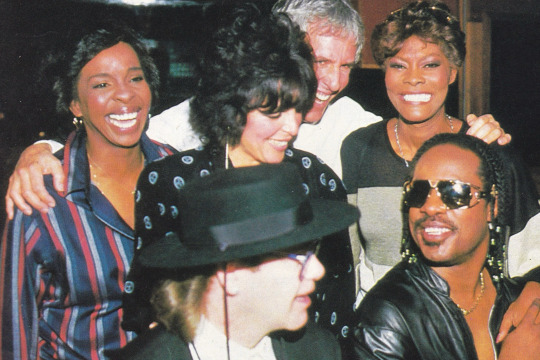
The proceeds of the platinum-selling “That’s What Friends Are For” were donated to the American Foundation for AIDS Research (AmFAR). Co-founded by Elizabeth Taylor in September 1985, one of AmFar’s first donations was a gift of $250,000 from Rock Hudson shortly before his death a month later. This gift, along with the amplification and monetary support by “That’s What Friends Are For,” AmFar has contributed to numerous breakthroughs that have extended and saved lives worldwide.
Dionne Warwick’s AIDS advocacy was not limited to this song. She became a vocal and visible advocate for AIDS research, education, and compassion. In March 1990 “That’s What Friends Are For” was performed by Warwick and her cousin Whitney Houston as the finale at the AIDS benefit That’s What Friends Are For: Arista Records 15th Anniversary Concert at Radio City Music Hall in New York City. The historic event, later televised on CBS, raised Over $2.5 million for various AIDS organizations.
youtube
Dionne Warwick’s dedication to AIDS advocacy continued for years, making her a significant figure not only in music history but also in the history of social activism. Her efforts helped shift public perception of AIDS and brought greater awareness and resources to combat the crisis. Her career is a testament to the power of music not just to reflect the times but to shape them.

Dionne Warwick is an enduring icon in both music and social activism. Praise her!
#granvarones#worldaidsday#dionne warwick#songs that soundtracked the aids epidemic#latinx#gay#storytelling#Youtube
9 notes
·
View notes
Text

I’m from northern Indiana, I grew up in between East Chicago Indiana, a town 25 mins south east of Chicago and another town on the opposite side of northern Indiana named Fort Wayne. Lucky for me those are two of the most diverse areas of Indiana.
I grew up in a low income, single mother household amongst my five other siblings. Despite the financial hardships I was blessed with a supportive and loving family that I’m very thankful for. Attending an inner city public high school also afforded me friends from diverse backgrounds. I’m very thankful for my upbringing- traumas and all.
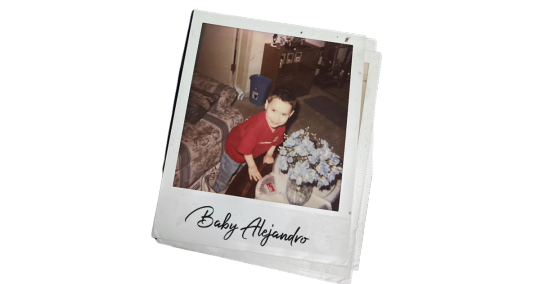
Telling my family and some close friends that I was diagnosed with truly HIV opened my eyes to the lack of education surrounding this disease. Some friends didn’t want to share drinks with me. My family thought I was going to die. I felt disgusted with myself. These conversations and feelings pushed me to become an advocate and activist for those, especially youth, living with this disease.
I further educated myself and sadly soon learned that I had to change my whole life plan. I anticipated enlisting in the navy upon my college graduation- as individuals with a four year degree are automatic officers. But I soon learned the United States military looked down upon people like me. They have laws on the books that are rooted in homophobia and outdated science. I wasnt welcomed to enlist. I wasn’t worthy of serving my country-in their eyes. This lit a fire within me to fight for the decriminalization of this disease.
I dedicate my life to those that came before me. Since my diagnosis I had the opportunity to intern on Capitol Hill where I made demands to lawmakers. I’ve spoken at national conferences. I’ve led a White House Roundtable where I talked to members of Congress and leaders on Bidens executive team. I’ve done so much work on campus- holding events to give my fellow scholars an opportunity to meet someone living with this disease. I became a Brother of a renowned fraternity that is dedicated to HIV & AIDS research and awareness. I’ve grown in my faith.

I’ve grown in my self love, still have work to do, but have grown nonetheless. I’m more than a diagnosis. I’m more than my childhood abuse. I’m more than a hookup. I’m more than someone’s preconceived ideas of who I am. I am fearfully and wonderfully made and am worthy of love, & respect. As is everyone who lives with HIV. I wouldn’t change anything about my life. I wouldn’t save myself from this diagnosis even if I could because in actuality this diagnosis saved me.
This is for all those that came before me. To the one’s that had to lose their life in order for me to live out my own. I admire, love, and respect each and every one of you. I hope I’m making you all proud. Rest in Peace to the old me. Rest in Power to all those that came before me. Our truamas can either work against us or for us- the choice is yours.
Alejandro Rodriguez
He/Him
Indiana, IL
5 notes
·
View notes
Text
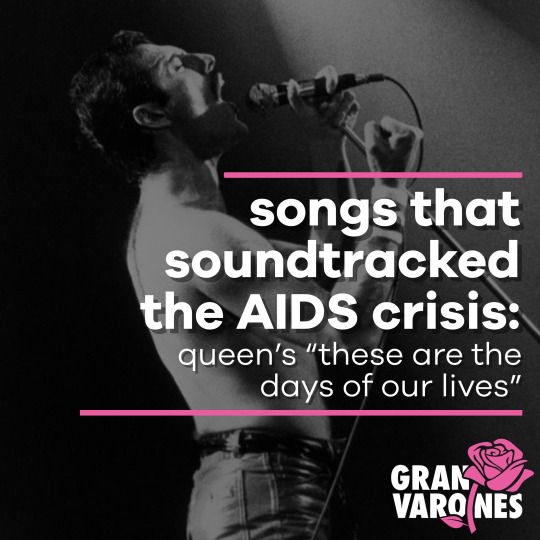
The early 1990s were a pivotal era in popular culture, significantly marked by the escalating AIDS epidemic. For Queen, one of the most celebrated rock bands of the 20th century, the impact of AIDS was deeply personal.
By the release of "Innuendo," Queen's fourteenth studio album, Queen had established itself as one of the world's most iconic and enduring rock. With a string of hits and groundbreaking albums throughout the 1970s and 1980s, the band had garnered a reputation for its eclectic musical style, theatrical performances, and Mercury's charismatic stage presence.
However, this was a period of transformation and challenge for the band. Mercury's declining health due to AIDS complications, though a closely guarded secret until near the end of his life, became a subject of speculation and media scrutiny, reflecting the stigma and fear surrounding the disease at the time.

Released in the US on September 5, 1991, on Mercury's 45th birthday, "These Are The Days of Our Lives" served as the 4th single from "Innuendo." Written by band member Randy Taylor, the song evokes a melancholic sense of nostalgia and longing for days gone.
The accompanying music video for "These Are the Days of Our Lives," released as his health deteriorated, featured a frail Mercury and accentuated the song's emotional impact. It was one of the last times Mercury appeared on camera, making the video a haunting yet graceful farewell from the beloved artist.
youtube
In the closing scene of the music video, Mercury delivers the line, "I still love you," with a direct gaze into the camera, and for many, it felt like a personal message from him.

Freddy Mercury's death on November 25, 1991, marked the end of an era for Queen and the music world. His loss also brought significant attention to the AIDS crisis and played a crucial role in raising awareness and fostering a more compassionate public discourse.
"These Are the Days of Our Lives" is a testament to Freddy Mercury's profound impact on music and his ability to connect with audiences through his artistry and humanity. The song remains beloved in Queen's discography, symbolic of their reach, impact, and legacy.
#granvarones#gay#queer#latinx#storytelling#afrolatinx#lgbtqia#aids#songs that soundtracked the aids epidemic#worldaidsday#Youtube
65 notes
·
View notes
Text
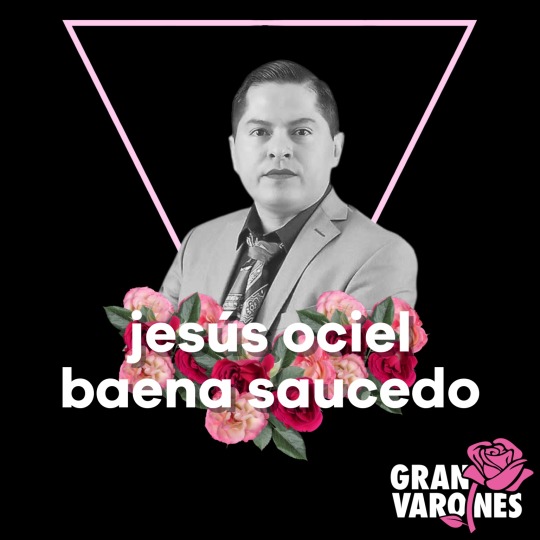
Jesús Ociel Baena Saucedo was a significant figure in Mexican LGBTQ+ politics, known for their pioneering role and activism in the community. Born on December 9, 1984, Baena Saucedo’s life and career were characterized by groundbreaking achievements and a dedication to advocating for non-binary and LGBTQ+ rights.
Baena Saucedo made history in Latin America by becoming the first non-binary magistrate on October 1, 2022. They served as an electoral magistrate at the State Electoral Court of Aguascalientes, marking a significant milestone in representing non-binary individuals in Latin American judiciary systems.
As a leading LGBTQ+ rights activist, Baena Saucedo was a prominent figure in advocating for the rights and recognition of LGBTQ+ communities. They were known for their judicial role and gained popularity as a TikTok content creator, focusing on electoral, political, and LGBTQ+ liberation.

Tragically, Baena Saucedo’s life was cut short at the age of 38 on November 13, 2023. They were found dead in their residence in Aguascalientes, under circumstances that remain surrounded by mystery. The cause of death was uncertain, but reports noted that Baena Saucedo and their romantic partner, who was also found dead, had received death threats related to Baena Saucedo’s gender identity.
Jesús Ociel Baena Saucedo’s contributions to the LGBTQ+ community and the broader push for social and political rights in Mexico cannot be overstated. Their pioneering role as the first openly non-binary magistrate in Latin America and their advocacy for recognizing LGBTQ+ people in Mexican politics will continue to inspire the fight for equality and representation.
Jesús Ociel Baena Saucedo’s life and untimely death highlight the ongoing struggles and dangers faced by LGBTQ+ activists. Their legacy lives on in the continued efforts towards equality and recognition of LGBTQ+ individuals in all spheres of society.
95 notes
·
View notes